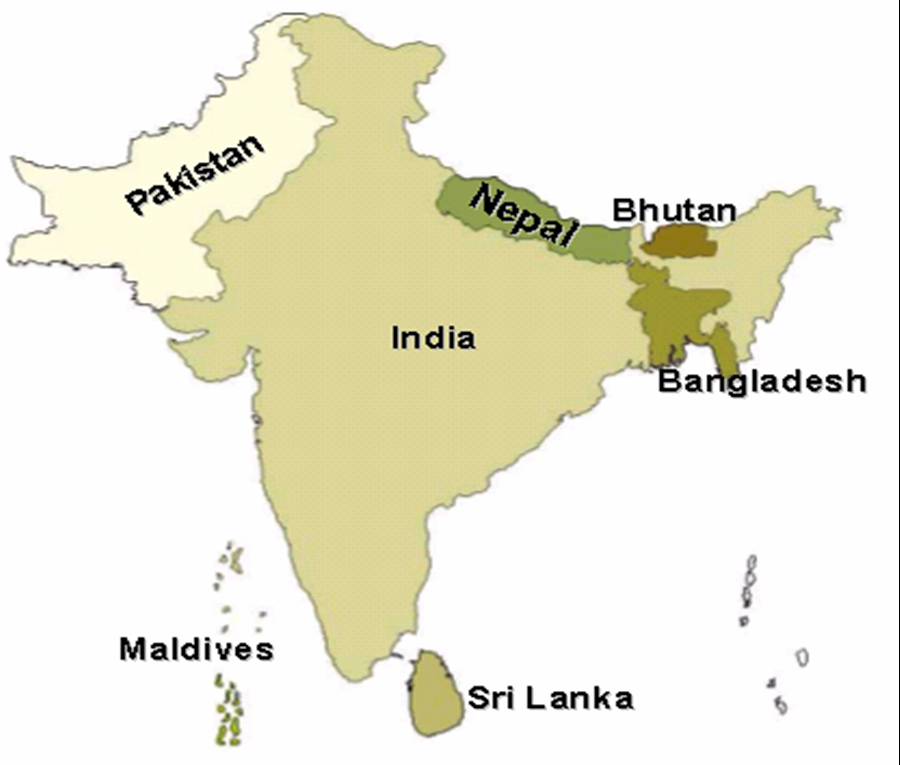|
|
Pakistan Ü Population growth, urbanization, and increased poverty – have endangered demand – supply imbalances, natural resources. Ü Soil erosion and land degradation a major challenge Ü Increased frequency of floods, drought and other extremes. Ü Highly vulnerable areas are agriculture, forest ecosystem, water resources, biodiversity and species. Ü Higher incidence of vector borne diseases. |
Nepal Ü Major issue of concern are glacial lakes expansion, forest fire, lesser agricultural production, land degradation and land use change, biodiversity and rare species loss in Himalayan region, frequent flood / landslide etcÜ Lack of proper understanding of GHG emissions and its impact and long term dataÜ Resources constraints |
Bhutan Ü Most vulnerable areas are forest & biodiversity, agricultural activities, water resources and human health.Ü Occurrence of natural disasters such as glacial lake outburst, dry spells with no snow fall, mid summer snowfall, flash floods etc.Ü Resources constraintsÜ Lack of awareness about climate change and its impact and CDM capabilities |
||||||||||||||||||||||
 |
Bangladesh Ü One of the most vulnerable state globally and in South Asia, due to its broad deltaic plain.Ü Severe natural disaster such as devastating cyclone (during April 1991) and floods (during 1998), tropical cyclones, storm surges, and drought.Ü Highly vulnerable to sea level rise along its coast affecting coastal economy.Ü Frequent occurrence of major tropical vector-borne diseases like malaria and dengue.Ü Resources constraints.Ü Lack of awareness about climate change and its impact. |
|||||||||||||||||||||||
|
India Ü Potentially vulnerable fields are agriculture, forestry, fisheries biodiversity and water resourcesÜ About 7,500 km long coastline is highly vulnerable to sea level rise affecting coastal ecosystems and its economy.Ü Increased incidence of extreme weather events such as tropical cyclone (Orissa- Oct. 1999), drought, floods, storm surges, etc.Ü Climate change will affect the availability of sufficient food, safe and adequate drinking water so ultimately affecting human health.Ü Higher incidence of vector-borne disease like malaria, dengue, measles etc. |
||||||||||||||||||||||||
Ü Sea level rise affecting low lying coastal areas, shoreline retreat, intrusion of salinity and coastal habitatsÜ Increase in temperature affecting hydro power generation due to increased water evaporation it may cause shift of hydro power generation to thermal power generation causing more GHG emissions.Ü Higher incidence of vector borne diseases, prolonged droughts and floods |
||||||||||||||||||||||||
|
Maldives Ü Threatened by sea-level rise |
||||||||||||||||||||||||
|
South Asia Climate Change Resource Centre |
||||||||||||||||||||||||
|
Background During 13-15th March 2002 a workshop "South Asia Regional Initiatives on Climate Change" was organised by Development Alternatives to discuss the issues and concerns related to Climate Change in the South Asian region and to find out ways to jointly address Climate Change in South Asia. During this workshop South Asian countries realised and recommened that, Development Alternatives may serve as a Resource Centre on Climate Change for countries in South Asia. Goal To increase awareness about climate change and climate change mechanisms among different stakeholder groups in South Asian Countries (Bangladesh, Bhutan, India, Nepal, Pakistan, Maldives & Sri Lanka ), build their capacity to take a proactive role in global negotiations and implementing climate change programmes. Objectives:
Functions of the Resource Centre:
Target Groups Various activities proposed will target different stakeholder groups such as Policy makers, Business sector, Civil society organizations, Local governments and Researchers etc. Benefits Offered by SACCRC The Resource Centre helps the South Asian countries in: • increasing their understanding and decision making capacities on climate change issues• bringing them up to a level of strength and • implementing climate change mechanisms for maximising benefits from such mechanisms |
||||||||||||||||||||||||